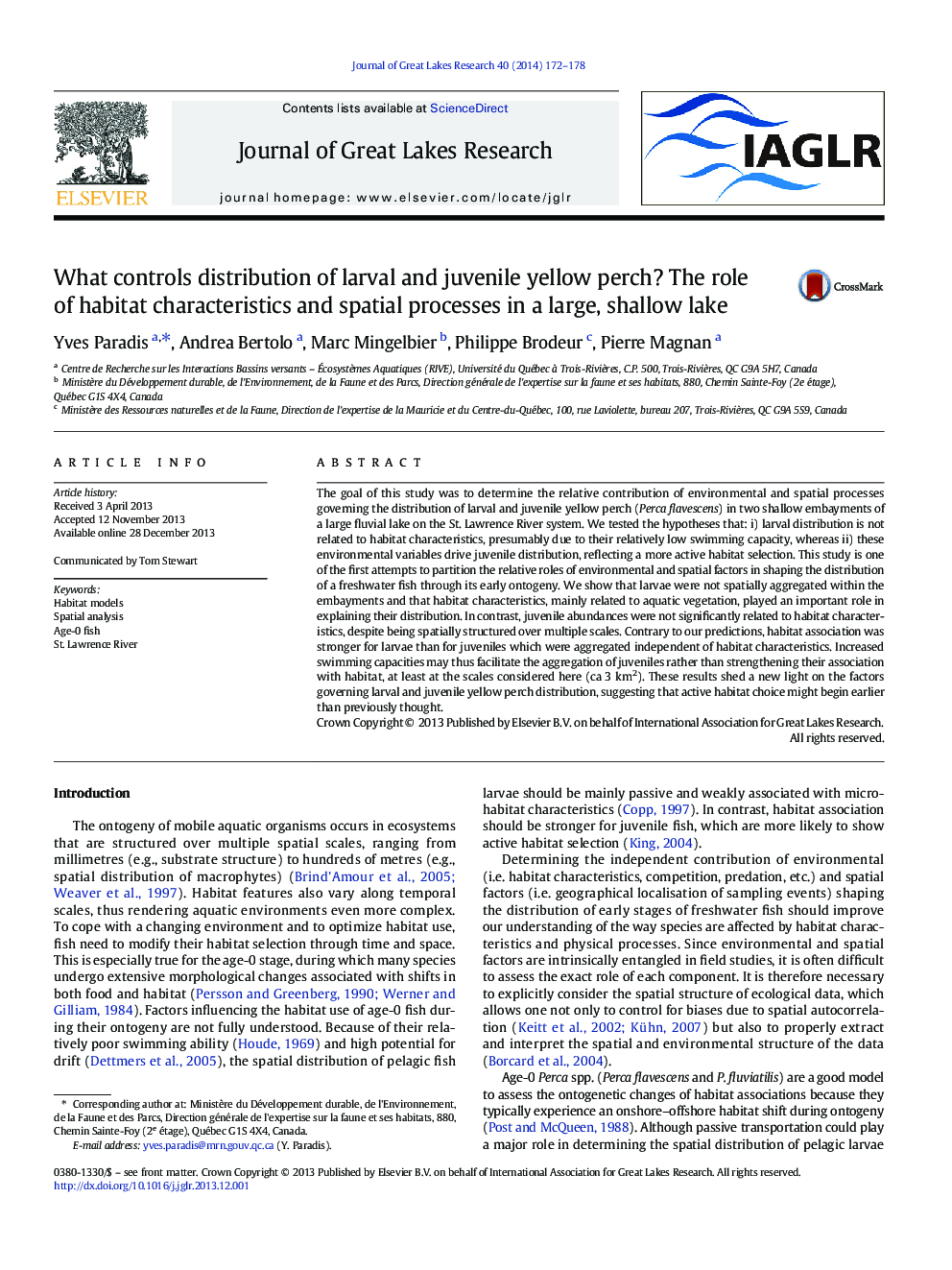| Article ID | Journal | Published Year | Pages | File Type |
|---|---|---|---|---|
| 6305377 | Journal of Great Lakes Research | 2014 | 7 Pages |
Abstract
The goal of this study was to determine the relative contribution of environmental and spatial processes governing the distribution of larval and juvenile yellow perch (Perca flavescens) in two shallow embayments of a large fluvial lake on the St. Lawrence River system. We tested the hypotheses that: i) larval distribution is not related to habitat characteristics, presumably due to their relatively low swimming capacity, whereas ii) these environmental variables drive juvenile distribution, reflecting a more active habitat selection. This study is one of the first attempts to partition the relative roles of environmental and spatial factors in shaping the distribution of a freshwater fish through its early ontogeny. We show that larvae were not spatially aggregated within the embayments and that habitat characteristics, mainly related to aquatic vegetation, played an important role in explaining their distribution. In contrast, juvenile abundances were not significantly related to habitat characteristics, despite being spatially structured over multiple scales. Contrary to our predictions, habitat association was stronger for larvae than for juveniles which were aggregated independent of habitat characteristics. Increased swimming capacities may thus facilitate the aggregation of juveniles rather than strengthening their association with habitat, at least at the scales considered here (ca 3Â km2). These results shed a new light on the factors governing larval and juvenile yellow perch distribution, suggesting that active habitat choice might begin earlier than previously thought.
Related Topics
Physical Sciences and Engineering
Earth and Planetary Sciences
Earth and Planetary Sciences (General)
Authors
Yves Paradis, Andrea Bertolo, Marc Mingelbier, Philippe Brodeur, Pierre Magnan,
